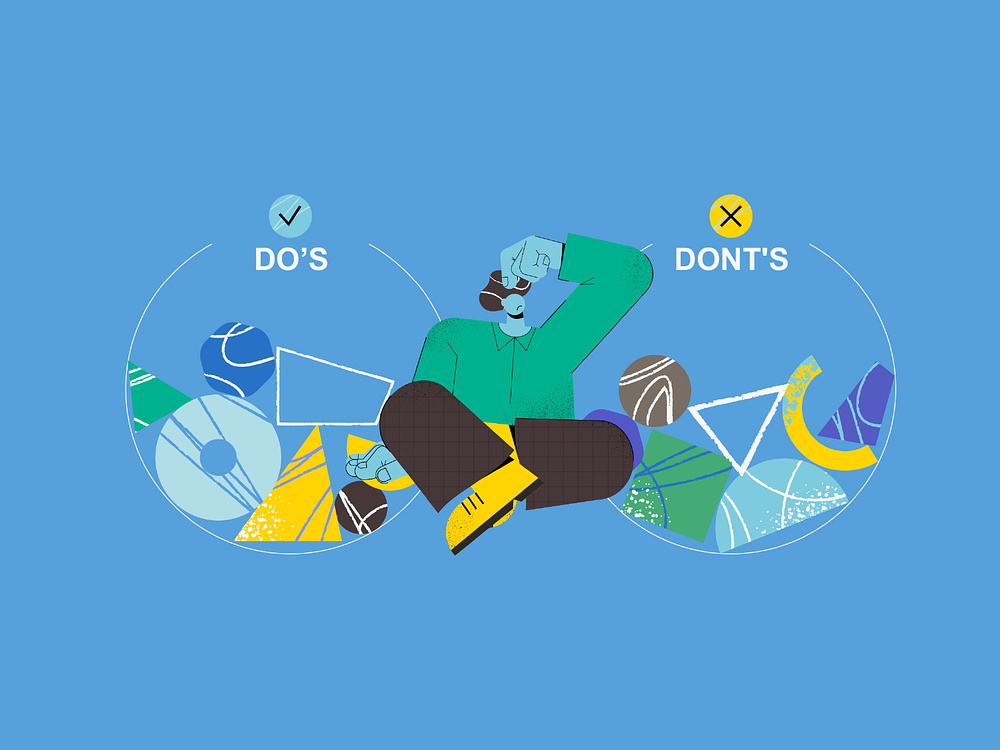In the digital world, first impressions are crucial. A captivating visual on your landing page can engage visitors, convey your message instantly, and guide them toward conversion. Visuals have the power to influence emotions and perceptions, making them indispensable in landing page design. This article will delve into the significance of visual content, explore best practices for using images and graphics, and share real-life examples of successful implementation.

The Power of Visual Content on Landing Pages
Visual content plays a pivotal role in creating an impactful first impression. When users land on a page, they often make snap judgments about its relevance and trustworthiness within a few seconds. Visuals can help reinforce your message, enhance brand perception, and engage your audience.
Why Visual Content Matters
Instant Communication: A picture is worth a thousand words. Visuals can convey complex ideas quickly, which is essential in capturing the attention of today's fast-paced internet users.
Enhanced Engagement: Research shows that visuals increase user engagement. According to a study by Brain Rules, when information is paired with relevant images, people retain 65% of the information three days later, compared to just 10% without visuals.
Emotional Connection: Visuals can evoke emotions, leading to a stronger connection with your audience. Whether it's joy, trust, or excitement, emotions drive decisions, and appealing visuals can tap into these feelings effectively.
Improved Brand Recognition: Consistent use of visual elements such as color schemes, fonts, and styles reinforces brand identity. This helps visitors recognize and remember your brand, increasing the likelihood of conversion.
Real-Life Example: Slack
Slack, a popular communication platform, is known for its effective use of visuals on landing pages. Their homepage features a vibrant and clean design that uses color-coded graphics to communicate the platform's functionalities. By employing illustrations that mirror real-life scenarios, Slack makes it easier for visitors to understand the product's benefits at a glance.
Best Practices for Using Visuals on Landing Pages
Implementing visuals strategically can make all the difference between a successful landing page and a lackluster one. Here are some best practices to ensure your visuals enhance the user experience and drive conversions.
1. Use High-Quality Images
Quality speaks volumes. Grainy or low-resolution images can make your site look unprofessional. Invest in high-quality visuals that reflect your brand's image and resonate with your audience. Ensure images are crisp, well-lit, and appropriately sized for different devices.
Real-Life Example: Apple
Apple's website consistently features high-quality images that highlight its products' sleek designs. By focusing on aesthetics, Apple creates a sense of luxury and innovation, attracting customers who value quality and style.
2. Optimize for Speed
While visuals are essential, they shouldn't compromise page loading speed. Slow-loading pages can lead to higher bounce rates. Use image compression tools to reduce file size without sacrificing quality. Consider leveraging modern image formats like WebP for better performance.
Real-Life Example: Airbnb
Airbnb optimizes images across its platform to ensure fast loading times. By balancing image quality with performance, Airbnb enhances the user experience, keeping potential guests engaged as they browse listings.
3. Incorporate Relevant Imagery
Select visuals that align with your message and target audience. Irrelevant or generic images can confuse visitors and dilute your message. Use images that complement your copy and resonate with your audience's needs and preferences.
Real-Life Example: Trello
Trello's landing pages use images that reflect team collaboration, a core aspect of its project management tool. By showcasing real-world applications, Trello helps visitors envision how the tool can fit into their workflow.
4. Leverage Visual Hierarchy
Visual hierarchy guides users' eyes through the content in the intended order. Use size, color, and contrast to prioritize elements and direct attention. Highlight essential information like CTAs with contrasting colors or larger fonts to ensure they're noticeable.
Real-Life Example: Dropbox
Dropbox's landing pages employ a visual hierarchy to lead users through their offerings. Key features are highlighted with larger images and contrasting backgrounds, making it easy for visitors to understand the value proposition.
5. Utilize Video Content
Videos are highly engaging and can communicate complex information succinctly. Incorporate videos to demonstrate product features, share customer testimonials, or provide tutorials. Ensure videos are concise and relevant to your message.
Real-Life Example: Dollar Shave Club
Dollar Shave Club gained immense popularity through its witty and informative explainer video. By showcasing its unique selling points humorously, the brand effectively captured its audience's attention, leading to increased conversions.
6. Personalize Visuals
Personalization creates a more tailored experience for visitors. Use dynamic visuals that adapt based on user behavior or preferences. Personalized visuals can enhance relevance and drive higher engagement.
Real-Life Example: Amazon
Amazon personalizes visuals by displaying recommended products based on user history. This approach increases the likelihood of conversions by showcasing items that align with individual preferences.
7. Test and Iterate
A/B testing is essential to determine what resonates best with your audience. Test different visuals, placements, and formats to identify what drives the most engagement and conversions. Use data-driven insights to refine your visual strategy continually.
Real-Life Example: Unbounce
Unbounce, a landing page platform, conducts regular A/B tests on visuals to optimize conversion rates. By analyzing user behavior, they continuously refine their designs for maximum effectiveness.
8. Maintain Consistency
Consistency in visual design creates a seamless user experience. Ensure that visuals across landing pages align with your brand's overall aesthetic, tone, and messaging. Consistent visuals foster trust and reinforce brand identity.
Real-Life Example: Nike
Nike maintains visual consistency across its digital platforms. Whether it's the use of bold typography, dynamic imagery, or signature color schemes, Nike's visuals are instantly recognizable, reinforcing its brand identity.
The Impact of Visual Content on Conversions

Visuals have a profound impact on conversion rates. By effectively utilizing visual content, brands can capture attention, convey messages clearly, and inspire action. Here's how visuals contribute to higher conversions:
- Increased Engagement: Engaging visuals captivate visitors, encouraging them to explore your content further. The longer users stay on your page, the more likely they are to convert.
- Improved Clarity: Visuals simplify complex information, making it easier for users to understand your offerings and benefits.
- Enhanced Trust: High-quality visuals convey professionalism and credibility, building trust with potential customers.
- Stronger Emotional Connection: Visuals that resonate emotionally create a lasting impression, influencing decision-making and encouraging conversions.
Real-Life Example: Canva
Canva, a graphic design tool, uses visuals to showcase the ease of creating stunning designs. By providing visually appealing examples of templates and projects, Canva encourages users to try the tool themselves, resulting in higher sign-up rates.
Signing Off
Incorporating visuals into landing pages is a powerful strategy for boosting engagement and conversions. By adhering to best practices, brands can harness the potential of visuals to communicate effectively, captivate audiences, and drive desired actions. As the digital landscape evolves, the role of visuals in landing page design will continue to grow, making them a crucial component of any successful online presence.
By understanding and implementing these strategies, you can create landing pages that not only captivate visitors but also guide them seamlessly toward conversion. Remember, every image, video, or graphic is an opportunity to make a lasting impression and achieve your business objectives.




